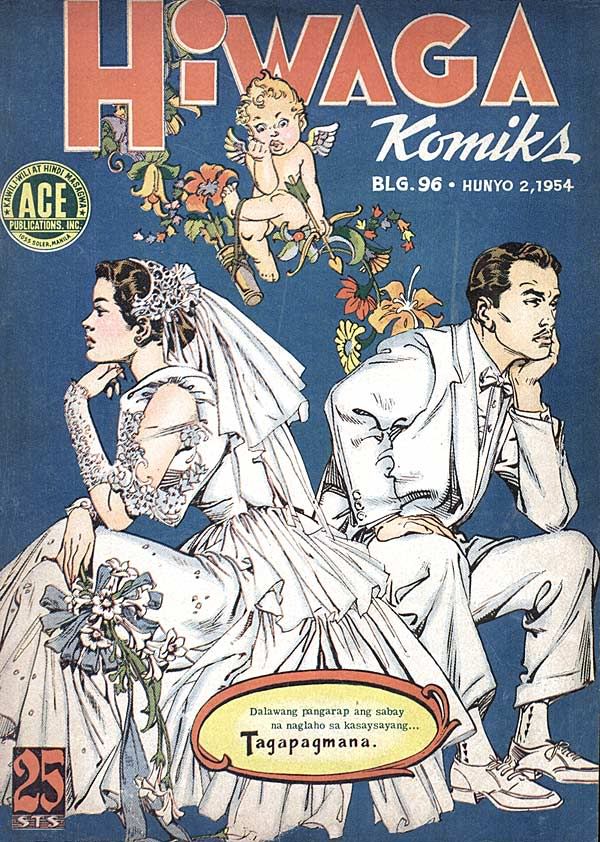
Hiwaga Komiks #96
June 2, 1954
Ace Publications
Once in a while I'll feature a an issue of a vintage comic book including covers and selected artwork. This time around it's issue 96 of Hiwaga Komiks. This cover is a puzzle. It's a frustrating practice of artists of the time to not sign their work for the covers, and they can only be identified on the strength of the particular artist's style. Oftentimes it's easy to spot a Redondo or Alcala or Niño. Coching is usually easy to spot, but with a proliferation of artists who copied him closely, it makes some unsigned pieces difficult to identify beyond a shadow of a doubt.
Looking at the above cover, I gotta say, I'm stumped. At first I thought it was an Alcala, but the linework doesn't seem to bear it out. Some of the shadings seem reminiscent of Coching, but his linework would have been much bolder. Looking at the hands and the hair, the girl's face, they guy's eyebrows and eyes, and the flamboyance of the cupid, my best guess would be Nestor Redondo.
Any other thoughts?
Browsing the rest of the issue....
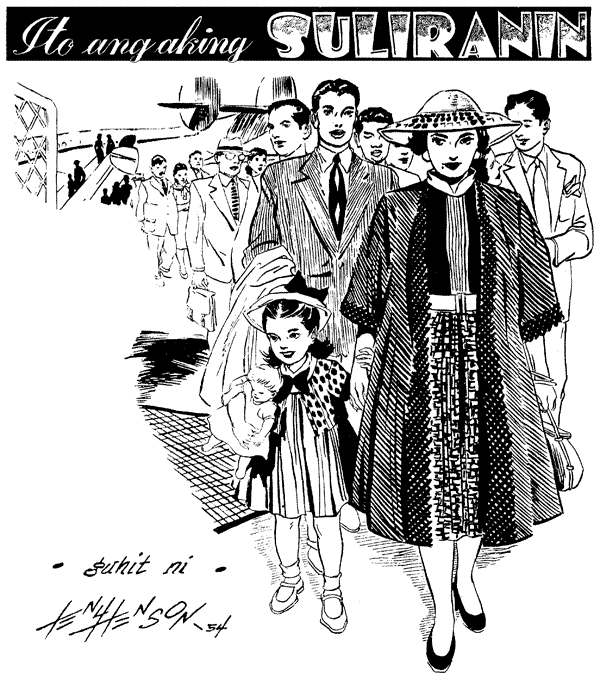
Teny Henson
Ito ang Aking Suliranin
Teny Henson sure is one very stylish artist. His compositions and linework are elegant and pleasing to the eyes. It's a crime that I haven't made a full profile/gallery of him yet, but that is forthcoming.
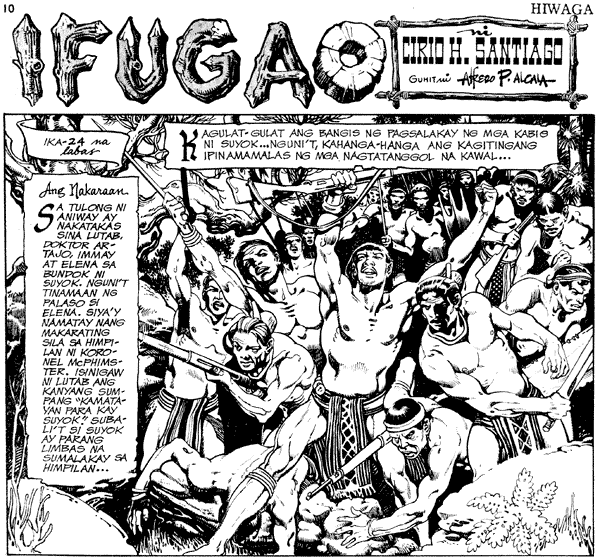
Alfredo Alcala
Ifugao
Written by Cirio H. Santiago
What's remarkable about comics during this time was its influence on pop culture and on the everyday lives of Filipinos. Many motion pictures are made based on comics stories, and in many cases, a particular story was already was already being shot on film as it was currently being serialized. Ifugao was no exception. Ifugao was only on its 24th installment when a movie adapting it has its opening day.
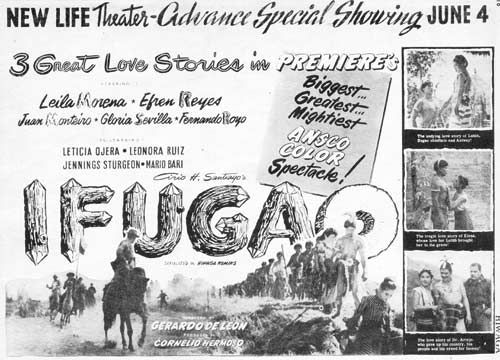
Aside from Ifugao, Alfredo Alcala had other movies based on his work currently being shown. One other was Ukala (Ang Walang Takot):

Ukala is a story written and illustrated by Alcala which had been serialized in Pilipino Komiks only a year or so previously. Indicative of the length and breath of variety of comics of the time, Ukala was a story about Native Americans upon the first arrival of Europeans.
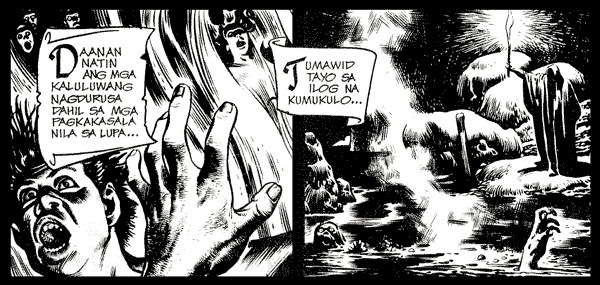
Nestor Redondo
Serafin Arcangel
Nestor Redondo's depiction of hell.
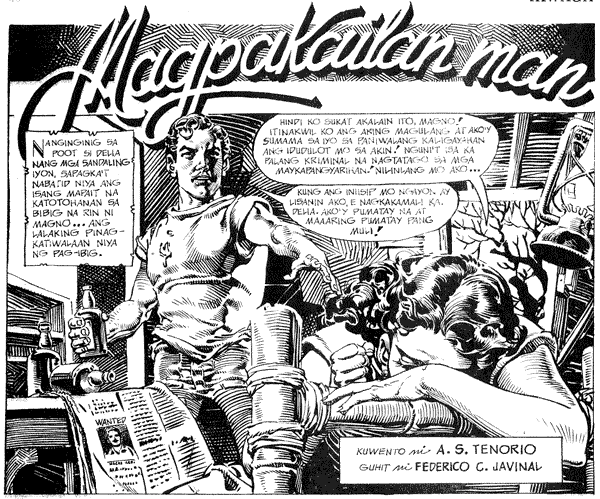
Federico C. Javinal
Magpakailan Man
Written by A. S. Tenorio
I met Federico Javinal a couple of years ago, just as he was retiring from drawing comics. What left an impression me was seeing one of his work tables. It was filled with compiled comic books of old stories which I had presumed to be his. He has worked in komiks since the very early days, and he has worked non-stop well into the 2000s. But what surprised me was that the compiled books were not by him, but by Francisco V. Coching. There were some books by him, but most of them were of Coching's.
It's no secret Javinal simply worships Coching and his work so much so that he has supplanted much of his own personal identity to draw very much like Coching. And talking with him about it, it seems he's perfectly OK with that. In a way it may be understandable as they collaborated on many stories including this one, where Coching wrote and laid out, and Javinal finished.
Although the two men's work are very similar, and would in fact may look identical to the casual reader, there are certain differences that set them apart.
Without taking anything away from Javinal's talent, as he's a very good artist in his own right, Coching is definitely the much superior artist. Although Javinal's work is much more detailed and much more carefully delineated,Coching's work is looser and much more dynamic, his linework thicker and bolder. There is no stiffness in Coching's work, a weakness that pops up in Javinal's work from time to time.
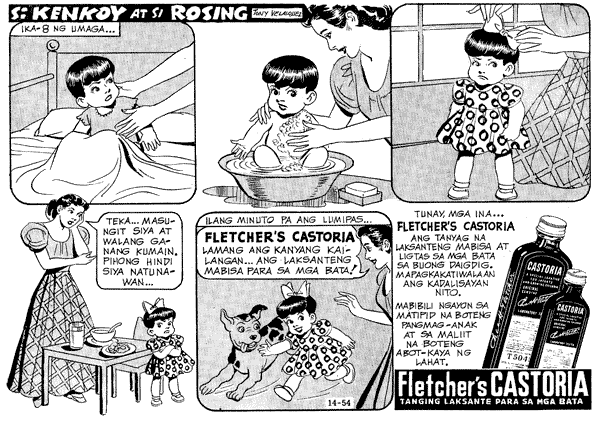
Tony Velasquez
Kenkoy at Rosing Castoria Ad
More featured comics in the future!
